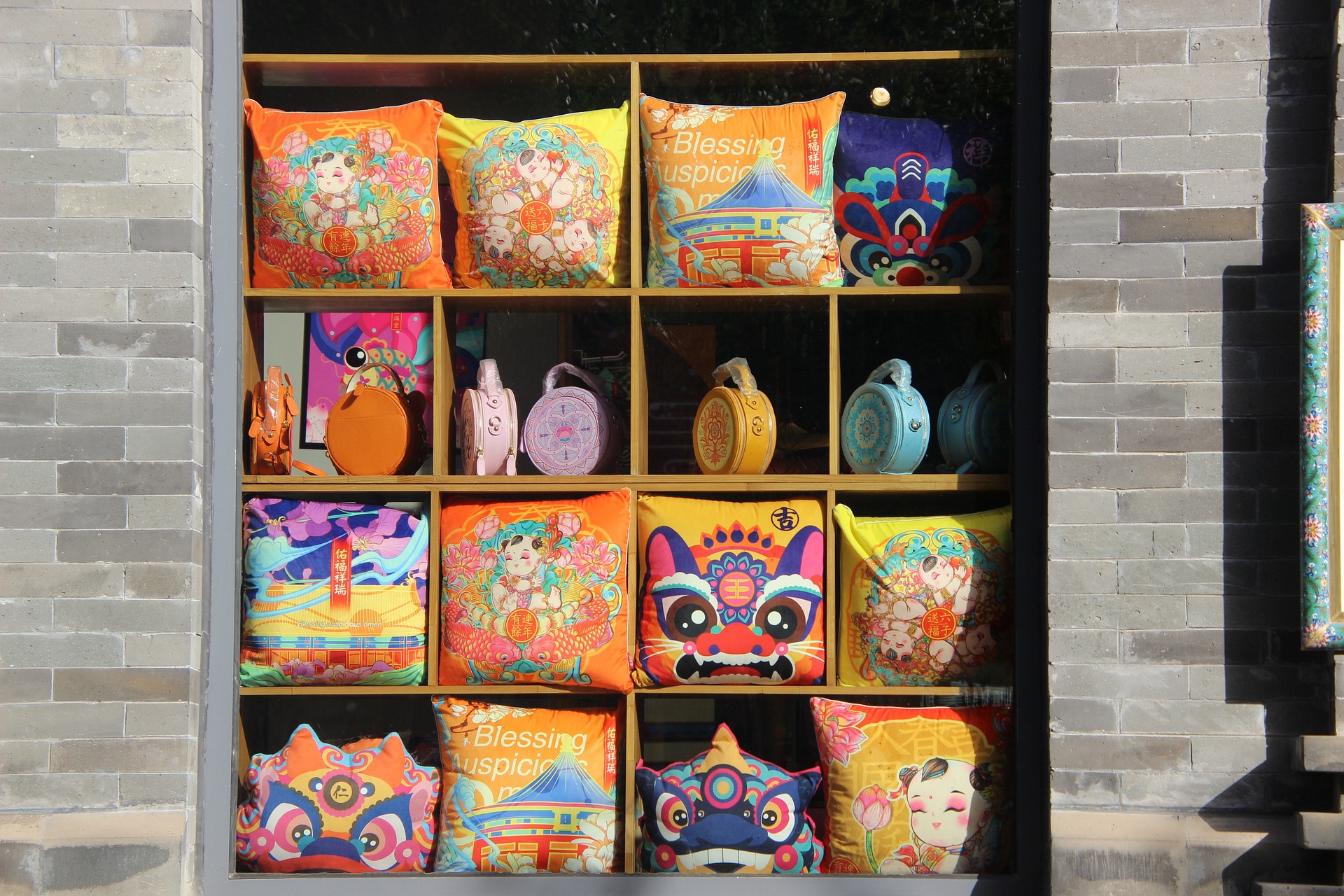Foreign brands have enjoyed a positive reputation in the Chinese market for years, but as China shifts to a consumption-driven economy, domestic brands are gaining increasing advantage. As the nation’s digital ecosystem becomes increasingly more complex and further diverges from what’s familiar to the West, Chinese companies are better able to navigate the digital world to which they are native.
On top of the booming digital world is the development of the Chinese consumer identity, led by Gen Z who find inspiration from within national borders and not from outside. Homegrown brands are built around this new consumer identity, whereas foreign brands are built for other consumers and adapted to Chinese ones. Here are five marketing strategies where domestic brands outperform their foreign counterparts in China.
1. Riding the Guochao
Guochao (国潮) is a term meaning ‘national wave’ which describes the trend led by Gen Z of making traditional Chinese elements fashionable. Guochao not only means consuming domestic brands, but any brand that shows consideration and understanding of traditional Chinese culture. Every Chinese New Year, brands take their turn at incorporating Chinese culture into their product design, packaging and marketing campaigns, but what’s different now is that the demand to include cultural elements is year-round.

Guochao is becoming a crucial marketing element for companies in China, and a big benefit for locally-based Chinese companies. It was with the introduction of the “中国李宁” collection and the incorporation of the Guochao trend that the Chinese sportswear brand Li-Ning was able to break free from the perception of being an “old-fashioned national product” and appeal to a younger audience.
It goes without saying that Chinese brands are better at using Chinese culture as a marketing point. For example, in the perfume industry local brands have found success by creating products that not only feature visually traditional Chinese designs but also evoke childhood memories for consumers. One example is Scent Library’s Milk Candy perfume which captures the aroma of a beloved sweet from Chinese childhoods.
However, this trend doesn’t completely exclude foreign brands. In March 2021, Nestle launched a new Cantonese culture-inspired ice cream brand Yue Xinyi (粤新意), featuring a delightful litchi rice wine osmanthus flavor.

2. Getting the most out of social media
Chinese brands have been on-top of their digital marketing strategies, with WeChat emerging as a key channel for marketing.
With WeChat’s extensive features, including gamification and customization, brands have found innovative ways to engage with their audience. Moreover, one notable marketing trend on the platform is the increased emphasis on direct-to-consumer communication: brands have started engaging in closer interactions with their customers, by inviting them to private group chats, creating a more intimate and visible connection with their followers.
Live commerce has become a crucial channel for online sales, combining live-streaming and online commerce to enable real-time interactions and purchases during live streams. With the market projected to reach 4.92 trillion yuan in 2023, it has become a vital marketing tool. Platforms such as Taobao, Douyin, Xiaohongshu, and WeChat offer this functionality, empowering brands to tap into this growing trend.
Many Chinese brands have shown foresight by considering the digital ecosystem throughout their development. Despite being a soft drink brand often purchased in convenience stores, Genki Forest earned the name of “internet brand” by heavily investing in show sponsorships and collaborating with KOLs. Similarly, the offline coffee brand Luckin Coffee’s entire business model was created for the digital world, offering mobile ordering and app-based discounts: Chinese brands consider the digital world at every stage, from product design and packaging to the business model and product promotion, ensuring a comprehensive approach to digital marketing.
3. Adapting to fast change and embracing an omnichannel approach
The Chinese market experiences changes and innovations at a very high frequency, and brands that want to compete in it successfully have to be ready to adapt to changes: agility is crucial for brands entering the market. According to McKinsey, since the pandemic, the market has seen rising competitive intensity, and technology and agility are among the main factors that drive winners to capture industry value. The market changes at “what seems like daily frequency”.
Building on that, Chinese consumers are raising their standards of shopping convenience, expecting services and products to be available 24/7 and delivered as fast as possible. This is why most Chinese brands are focusing on improving their supply chains’ effectiveness. Achieving this is much simpler for domestic companies, because they are locally-based and tend to have locally-produced supply, which facilitates shipping.
The changing roles of online and offline sales channels
The speed of fast change is especially evident in the growing importance of digitalization in China. In a 2022 report, McKinsey interviewed domestic retailers and found out that more than half of them were focusing on expanding their omnichannel operations, and a third were concentrating on increasing their use of artificial intelligence in order to analyze big data, achieve automation, and improve efficiency.
Almost 40% of Gen Z consumers in China stated they would browse apparel in-store but shop online, which underlines that the two fields play different but equally important roles. This pushes domestic brands to upgrade direct-to-consumer digital touchpoints and transform offline stores into seamless experiences.
For example, the Chinese convenience store chain, Meiyijia, has been upgrading and digitizing their membership system. The WeChat-based membership system now integrates Meiyijia’s official WeChat public account, payment service, WeChat posts, Key Opinion Leaders (KOLs), online portals for its partners, and access to its brick-and-mortar stores. This brought big benefits such as streamlined processing, wider customer reach and greater interactivity, drastically increasing the number of members.
4. Catering packaging to the digital world
Any restaurant, luxury clothing brand or jeweler hopes to be ‘instagrammable’ and caters their décor and products to capture the attention of cameras. However, in China, this trend extends to product packaging. Many Chinese brands that have arisen in the past few years have the social media economy in mind, not just as a marketing after-thought, but in the product and packaging design.
One prime example of this is Saturnbird, a Chinese instant coffee brand that packages its product in small, colorful cups, each containing one serving of instant coffee and a large number indicating the blend. The unique packaging design made the cups highly shareable on social media, prompting a flurry of Key Opinion Consumers (KOCs) to post about the product. This helped Saturnbird bypass the need to hire KOLs, which are more expensive and often perceived as less authentic than KOCs.

5. Complementing their KOL strategy with KOCs
KOLs are considered a “must-have” for China marketing strategies. However, brands may get more bang for their buck by tapping into KOCs. For starters, KOLs are large-scale influencers, their widespread influence can come with a hefty price. In contrast, KOCs are often regular consumers who don’t need payment to promote a product and will naturally share products they like.
Brands like Saturnbird are tapping into China’s massive pool of KOCs just by creating shareable products. Other brands are turning their employees into KOCs, such as the clothing brand Peacebird, that launched the APP “Niaoda” (鸟嗒) to encourage employees and users to share their daily outfits to further cultivate and explore potential KOCs.
Xiaohongshu and Douyin are hot spots for KOC marketing. Douyin’s algorithms continuously deliver personalized content to users, catering strongly to niche groups and consumer tribes, which is where KOCs thrive.
One tribe in particular that demands KOCs are “skintellectuals”, or ingredient-oriented skincare consumers. These consumers have high standards of authenticity in their information sources and thoroughly research skincare online, making KOC marketing a crucial strategy to reach them. UNISKIN, a Chinese ingredient-oriented skincare brand, has perfectly targeted Chinese skintellectuals thanks to their Xiaohongshu KOC strategy.
What foreign brands can learn from Chinese brand’s marketing strategies?
It is all too easy for foreign brands to copy and paste their domestic market strategy into new markets. However, this approach is not effective in China due to the nation’s unparalleled digital ecosystem and the unique consumer identity. Therefore, foreign brands need to conduct thorough market research in China, including studying the strategies of local brands.
How domestic brands outshine in marketing
- Foreign brands have enjoyed positive reputations in China for years, but domestic brands are uncovering their home-field advantage with these marketing strategies.
- Guochao is consistently gaining importance, with consumers preferring brands that embrace local culture, traditional Chinese flavors, scents, and symbols.
- Digitizing, innovating and being present on social media platforms is crucial to competition in China.
- Social media’s role continues to be crucial to brands’ growth, with new features like live commerce increasing sales.
- Brands focus on omni-channel development, with offline stores becoming more experiential spaces and e-commerce serving to expand sales.
- Complementing KOL strategies with KOCs can bring more loyal customers to brands, reducing the distance between brands and their clients.
Read about China x ASEAN business relations






